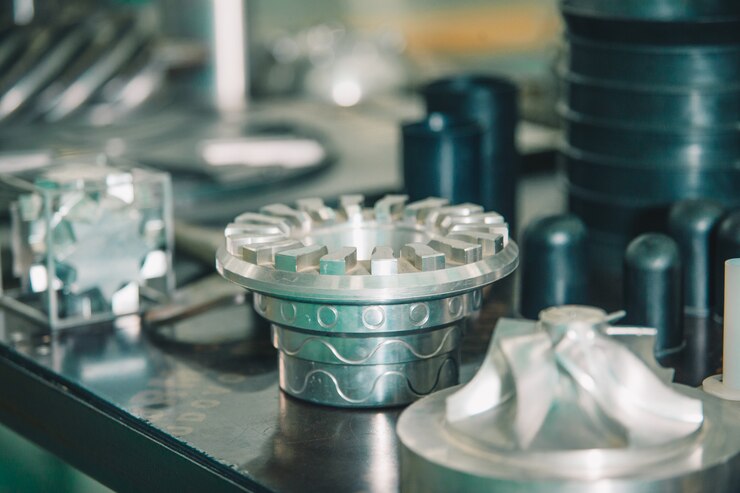Zinc die casting has carved a prominent niche in modern manufacturing due to its unique combination of properties and cost-effectiveness. This process transforms molten zinc alloy into intricate and high-precision metal parts, finding application across various industries. Let’s delve into the versatility of zinc die casting, exploring its advantages and the diverse applications it empowers.
Advantages of Zinc Die Casting:
Exceptional Strength and Rigidity: Compared to commonly used plastics in injection molding, zinc die casting boasts superior strength and rigidity. This makes them ideal for structural components requiring significant load-bearing capabilities, such as automotive parts, appliance components, and electronic housings.
Durability and Corrosion Resistance: Zinc offers excellent durability, especially when compared to many plastics. Its natural resistance to corrosion makes it suitable for applications exposed to moisture, humidity, or mild chemicals. This extends the lifespan and functionality of zinc die-cast parts in various environments.
Dimensional Accuracy and Smooth Surface Finish: Die casting delivers parts with exceptional dimensional accuracy and tight tolerances. Additionally, the casting process results in a smooth surface finish, often minimizing the need for extensive post-processing steps. This translates to high-quality parts that meet precise specifications.
Faster Production Rates: Die casting offers faster cycle times compared to plastic Injection molding materials. This allows for high-volume production, making zinc die casting a cost-effective option for large-scale manufacturing projects.
Lightweight Compared to Other Metals: While denser than plastic, zinc remains lighter than commonly used die casting metals like aluminum. This weight advantage can be crucial for applications where weight reduction is a factor, offering a balance between strength and weight considerations.
Excellent Electrical Conductivity: Zinc possesses good electrical conductivity, making it a valuable choice for components in electrical applications like connectors, housings, and heat sinks. This property allows for efficient heat dissipation and electrical signal transmission.
Cost-Effective for High Volume Production: Despite the initial cost of die casting molds, zinc die casting becomes cost-effective for high-volume production runs. The faster cycle times and minimal post-processing requirements contribute to its overall economic advantage in such scenarios.
Applications of Zinc Die Casting:
The versatility of zinc die casting extends to a wide range of industries, capitalizing on its unique blend of properties:
Automotive Industry: Zinc die castings are prevalent in various automotive components due to their strength, durability, and dimensional accuracy. Examples include:
Door handles, window cranks, and other interior components
Instrument bezels, control panels, and knobs
Headlight and taillight housings
Radiator grilles and brackets
Consumer Electronics: The smooth surface finish and inherent strength of zinc die castings make them suitable for electronic device components, such as:
Laptop and keyboard housings
Mobile phone casings (particularly for structural elements)
Remote controls and appliance knobs
Hardware and Tools: Zinc’s strength and durability translate well to hardware applications, including:
Locks and doorknobs
Hinges and fasteners
Tool handles and levers
Building and Construction: Zinc die castings find use in various building components due to their dimensional stability and corrosion resistance:
Door handles and hardware
Electrical components like switch plates and outlets
Plumbing hardware like faucets and valves
Medical Devices: While not as common as other materials in medical applications, zinc die casting can be used for specific medical devices requiring strength and a smooth surface finish, such as:
Housings for medical instruments
Certain disposable medical components (depending on specific regulations)
Beyond the Advantages:
While zinc die casting offers numerous advantages, it’s essential to consider some limitations:
Limited Material Selection: Unlike plastic injection molding with its vast array of material options, zinc die casting is restricted to zinc alloys. This limits the range of properties achievable compared to some plastics.
Part Size Limitations: The high pressures involved in die casting can restrict the maximum size of parts that can be produced using zinc.
Susceptibility to Certain Chemicals: While generally corrosion-resistant, zinc can be susceptible to strong acids and alkalis. Careful material selection and surface treatments might be necessary for applications exposed to such chemicals.
Conclusion:
Zinc die casting stands as a versatile and cost-effective solution for modern manufacturing, offering a compelling combination of strength, durability, dimensional accuracy, and faster production rates. Its applications span various industries, from automotive and electronics to hardware and construction. By understanding the advantages and limitations of zinc die casting, manufacturers can make informed decisions about the suitability of this process for their specific needs. As technology continues to evolve, we can expect further advancements in zinc alloy development and die casting techniques, potentially expanding the reach of this valuable manufacturing process.
Read More:

